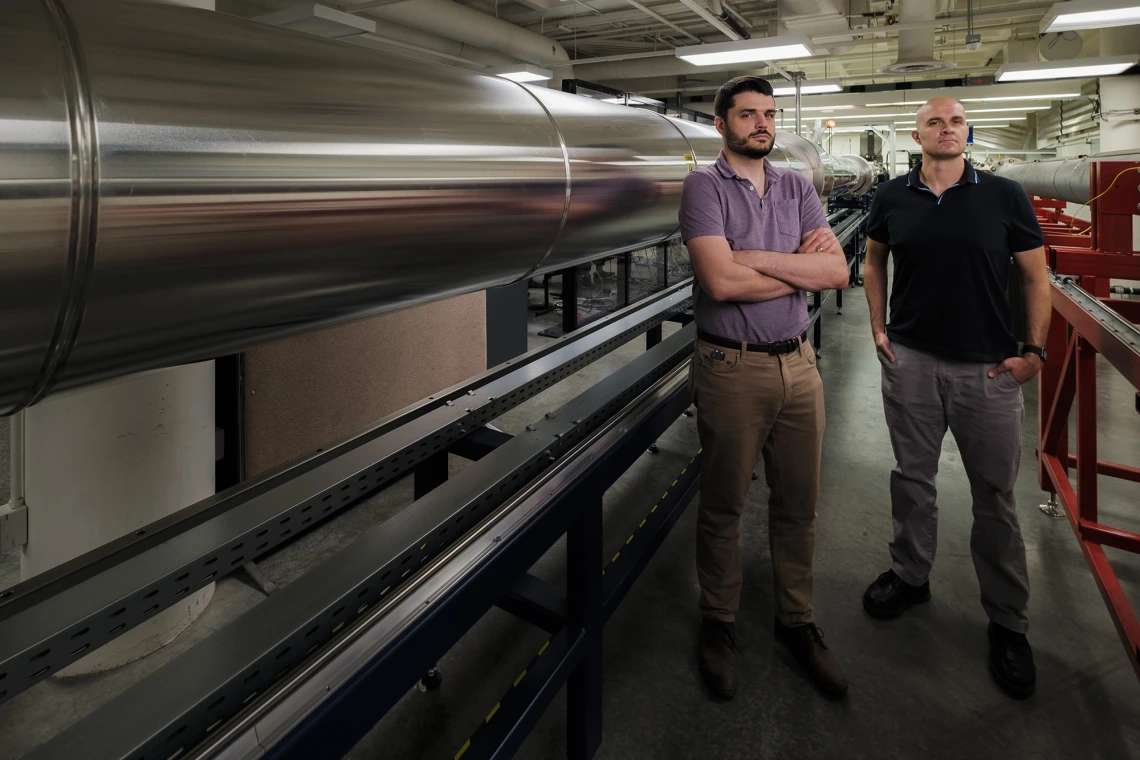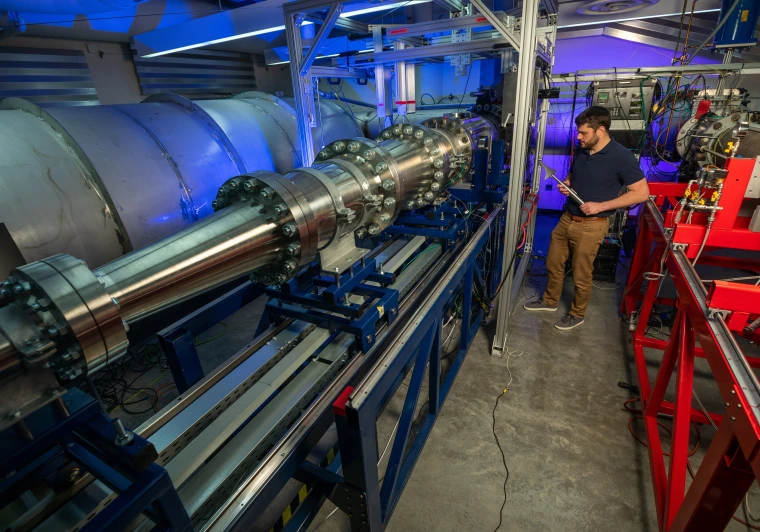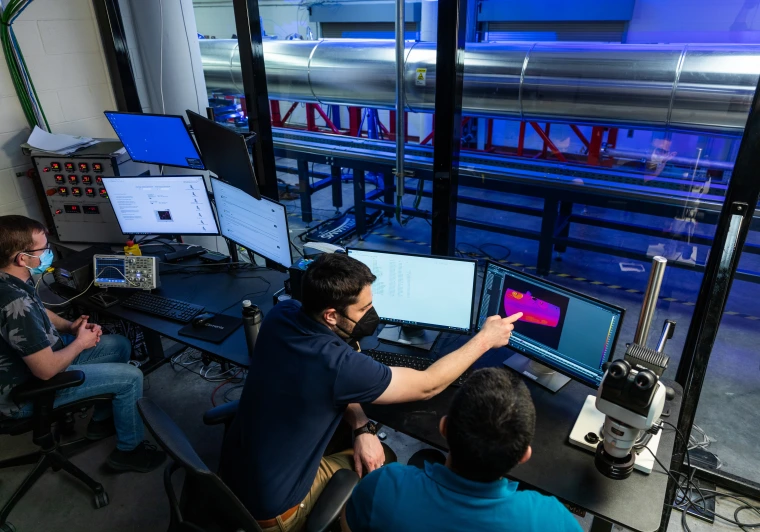Wind-Powered Defense
Expanded wind tunnels serve defense and industry.


Alex Craig and Jesse Little | Julius Schlosburg photo
University of Arizona aerospace and mechanical engineering researchers have received $3.5 million in funding from the state of Arizona’s investment in the New Economy Initiative and $6.5 million in federal support through the Department of Defense’s Test Resource Management Center to upgrade hypersonic facilities and related research infrastructure.
The funding positions the university as a leading educational institution in the hypersonics field, says Alex Craig, an assistant professor of aerospace and mechanical engineering.
“We’re moving our wind tunnel complex into a more capable realm that you typically don’t see at universities, because it’s usually reserved for government facilities like NASA,” Craig says. “With these upgrades, we’ll be able to provide impactful ground testing services to DOD and its contractors, NASA, and emerging private ventures supporting space and commercial travel, while still fulfilling our educational mission.”
Wind tunnels blast air at high speeds past fixed objects, helping researchers better understand how similarly shaped objects, such as aircraft and missiles, behave in flight. Wind tunnel speed is represented by Mach number, with Mach 1 being equal to the speed of sound — about 761 mph at sea level.
UArizona is home to two hypersonic facilities and additional wind tunnels that permit testing from Mach 0 to Mach 5.
The Boundary-Layer Stability and Transition Laboratory, led by Craig, houses a 15-inch-diameter Mach 5 Ludwieg tube, also known as LT5. The Turbulence and Flow Control Laboratory is led by aerospace and mechanical engineering associate professor Jesse Little. Its newest addition is the Arizona Supersonic Wind Tunnel, which currently operates at speeds ranging from Mach 1.75 to Mach 4. The Mach number is changed by adding different nozzle blocks — 12 in total — which weigh about 1,800 pounds each.
The funding will support a suite of upgrades for both UArizona hypersonics facilities, including extending the capacity of the Arizona Supersonic Wind Tunnel to Mach 5 – thereby changing it to the Arizona Polysonic Wind Tunnel. It also will fund a new air supply system, automation capabilities, and a nozzle allowing LT5 to better imitate flight conditions in the Earth’s atmosphere.


